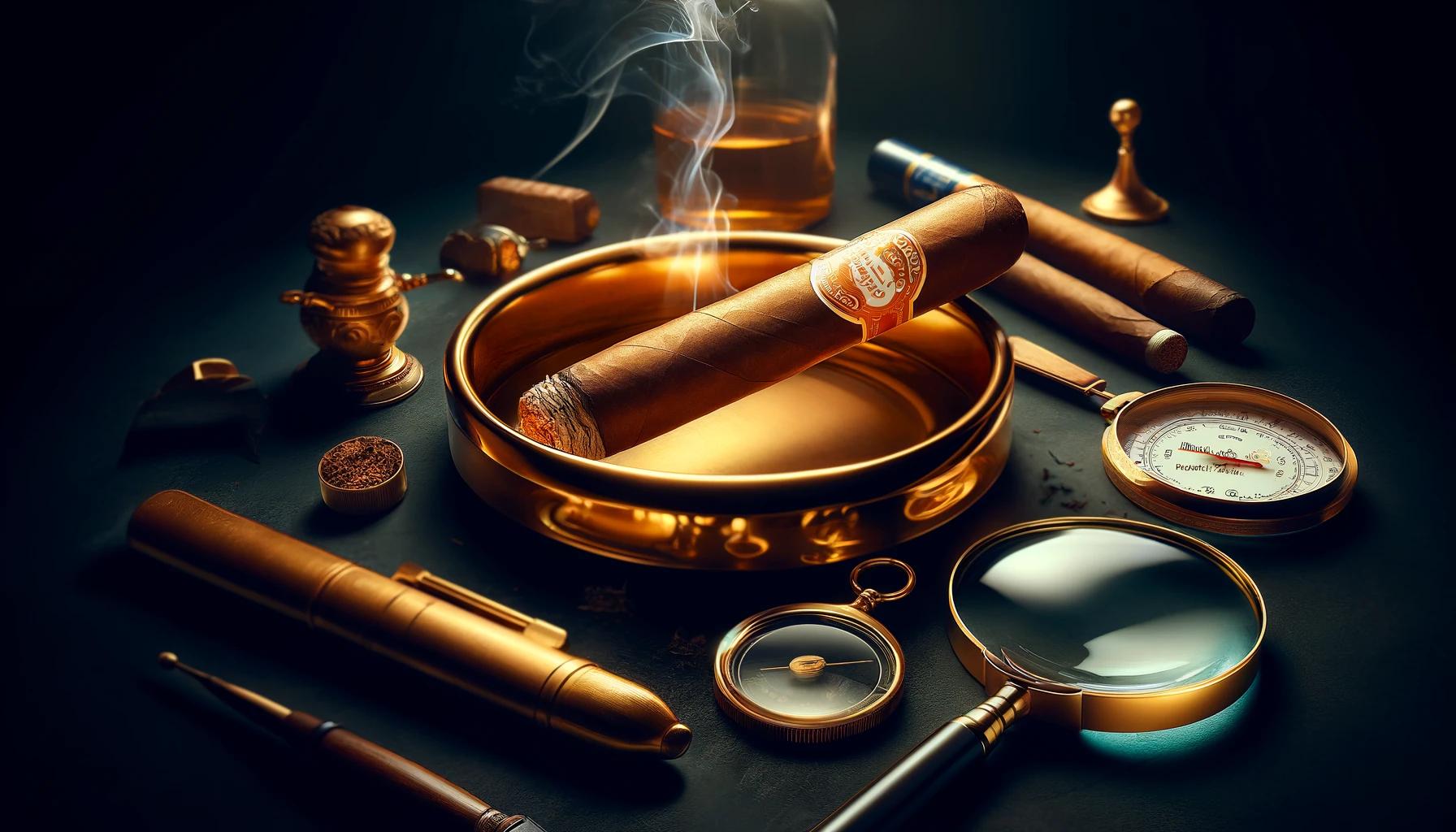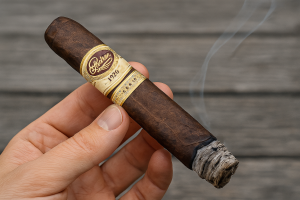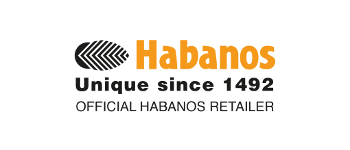How to Spot a Fake Trinidad Cigar - The Ultimate Authencity Check

Trinidad is a well-known cigar brand and it stands out as a symbol of luxury and quality.
The ability to distinguish a fake cigar from an authentic one has become crucial for enthusiasts and collectors alike. These forgeries not only undermine the true experience of this Cuban cigar but can also lead to health risks and financial loss.
By equipping yourself with the necessary knowledge to identify genuine products, you can navigate the market with confidence.
In this guide, you will learn the necessary tips for spotting fake Trinidad cigars before making your purchase, ensuring that every cigar you buy is authentic and of the highest quality.
The Best Ways to Spot a Counterfeit Trinidad Cigar
By checking these criteria, you’ll be able to identify fake Trinidad cigars with ease.
|
Fake Trinidad Cigar |
Authentic Trinidad Cigar |
|
|
External Seals |
Misaligned, flat | Embossed, aligned |
|
Smell |
Off-putting, chemical | Complex, rich |
|
Documents |
Missing, poor quality | Professional, accurate |
|
Visual Analysis |
Inconsistent, flawed | Uniform, flawless |
|
Touch |
Uneven, soft |
Firm, resilient |
|
Price |
Under $10 |
$10 to $30 per cigar |
|
Box Type |
Low-quality, incorrect |
High-quality, accurate |
|
Cigar Cut |
Irregular, mixed |
Clean, uniform |
|
Internal Seals |
Missing, incorrect |
Present, correct |
|
Barcode Verification |
Non-verifiable, wrong |
Verifiable, matches |
|
Cuños |
Incorrect, vague |
Correct, detailed |
Inspecting the External Seals
Genuine Trinidad cigars are distinguished by their meticulously crafted external seals. These are not just simple stickers but are embossed and have a distinct texture. The seals should be evenly applied, without any signs of tampering or misalignment.
Counterfeit products, on the other hand, often have poorly replicated seals, which may be uneven, misaligned, or lack the characteristic embossing of the originals.
Evaluating the Aroma
An authentic cigar exudes a complex and inviting aroma, featuring layers of earthiness, woodiness, and occasional floral hints.
Counterfeit cigars, due to inferior tobacco and materials, might emit a less pleasant or chemical-laden odor, a significant departure from the expected rich fragrance. They are typically made from inferior tobacco.
Sometimes, hazardous materials are used to mimic the consistency of genuine products.
Verifying Documentation
Accompanying each genuine cigar are certain documents that validate its authenticity and heritage.
These documents should appear professional and error-free. A lack of proper documentation or the presence of poorly made paperwork could be a signal of a fake product.
Conducting a Visual Inspection
Authentic Trinidad cigars display a uniform color and smooth texture, with no blemishes or irregularities.
Fake versions, however, may show inconsistencies in color, texture, or construction, hinting at their dubious origin.
Feeling the Texture
A quality cigar feels consistently firm yet slightly resilient to the touch, reflecting expert construction and proper moisture levels.
Conversely, a counterfeit may feel uneven, too hard, or too soft, indicating poor craftsmanship.
Assessing the Price Point
For an authentic Trinidad cigar, the price range typically falls between $10 to $30 per cigar, depending on the specific model and location of purchase.
On the other hand, a fake one might be priced significantly lower, often under $10, to attract buyers looking for a bargain.
Examining the Box Quality
The packaging of original Trinidad cigars mirrors the quality of the cigars themselves, with well-crafted, accurately branded boxes.
A poorly constructed box with incorrect branding or typos can be a clear indicator of not-original goods.
Testing the Cut of the Cigar
Cutting into a genuine cigar should reveal a clean edge and uniform internal tobacco.
If the cut exposes a mix of fillers or any non-tobacco elements, it's likely not a genuine article.
Checking the Internal Seals
Genuine cigars feature certain internal seals and markings that counterfeiters often neglect. Missing or incorrect internal seals are often a strong telltale sign of fraud.
Using Barcode Checks
Original Trinidad typically includes a barcode that can be verified for authenticity.
Counterfeit cigars may have non-functional or incorrect barcodes, providing a clue to their illegitimacy.
Reviewing the Cuños Markings
Genuine cigars carry specific stamps and markings (cuños) that are hard to replicate accurately.
Trinidad has evolved in their branding, starting with non-embossed bands pre-2003 and transitioning to embossed ones thereafter. This detail is crucial for verification.
Deviations in these markings from established standards are a strong indication of a counterfeit.
Comparing with Known Counterfeits
Educating yourself with images and characteristics of known fake cigars can help in identifying these counterfeit products.
Any similarities between your cigar and documented counterfeits should be considered red flags.
Performing the Cigar Test
This test is a final, more invasive step to confirm the authenticity of Trinidad cigars, typically reserved for when there's a strong suspicion of a counterfeit.
This definitive test involves examining the interior composition of the cigar. Genuine Trinidad should contain primarily long, whole tobacco leaves, indicative of high-quality "tripa larga" construction.
Although some smaller leaf fragments are expected due to the natural cigar-making process, the majority should be long, reflecting the use of entire leaves.
In contrast, fake cigars may contain a mix of different or shorter leaves, revealing their inferior construction and confirming suspicions of forgery.
Counterfeit products may contain contaminants such as hair, dust, and insects. This poses serious health risks to consumers. The illegal production of these fakes supports underground markets and undermines the reputation of the original brand.
Also, the variety of counterfeit presentations in the market can easily lead to confusion between original and fake products:
- counterfeit cigars sold in loose bundles
- imitations housed within entirely counterfeit boxes
- replicas presented in packaging that deviates from the original designs
- genuine boxes filled with fraudulent cigars
Conducting the cigar test not only protects enthusiasts from harmful counterfeits but also preserves the integrity and heritage of the Trinidad brand.
The Legacy of Trinidad Cigars
Trinidad cigars have carved out a prestigious niche within the world of premium tobacco products, celebrated for their exceptional quality and rich history. Originating from Cuba, these cigars were initially created exclusively for diplomats and high-ranking officials, which added to their allure and mystique.
Over time, these Cuban cigars became available to the wider public, quickly gaining fame for their meticulous craftsmanship and distinctive blend of flavors. This esteemed reputation, however, has made them a prime target for counterfeiters seeking to capitalize on the brand's luxury status.
While the journey to differentiate between real and fake Trinidad cigars can be challenging, it's a necessary skill for any aficionado. Remember, at Online Cigars, we guarantee the authenticity of every cigar in our collection. Trust in our commitment to quality and start your journey with genuine, top-tier cigars today.















